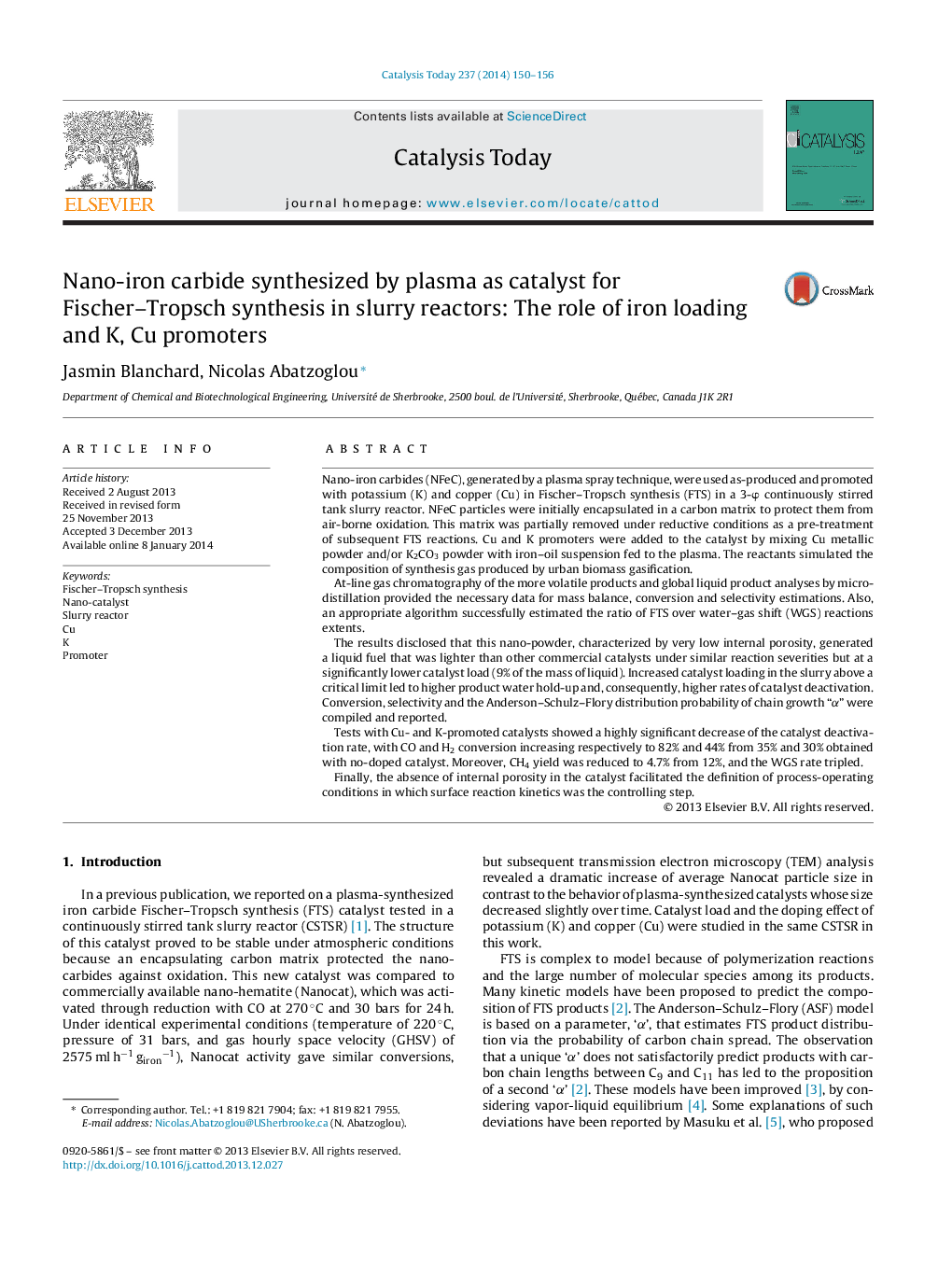| کد مقاله | کد نشریه | سال انتشار | مقاله انگلیسی | نسخه تمام متن |
|---|---|---|---|---|
| 53987 | 46991 | 2014 | 7 صفحه PDF | دانلود رایگان |

• H2O hold-up influence significantly catalyst's oxidation and reduction reactions.
• Due to increased surface-H concentration, Cu doping inhibited catalyst deactivation.
• K doping tripled WGS rate, cut half CH4 and increased the yield of unsaturated HC.
• AFS model parameter ‘α’ has been estimated between 0.60 and 0.75.
• The catalyst high WGS activity leads to ‘α’ lower than that of other iron catalysts.
Nano-iron carbides (NFeC), generated by a plasma spray technique, were used as-produced and promoted with potassium (K) and copper (Cu) in Fischer–Tropsch synthesis (FTS) in a 3-φ continuously stirred tank slurry reactor. NFeC particles were initially encapsulated in a carbon matrix to protect them from air-borne oxidation. This matrix was partially removed under reductive conditions as a pre-treatment of subsequent FTS reactions. Cu and K promoters were added to the catalyst by mixing Cu metallic powder and/or K2CO3 powder with iron–oil suspension fed to the plasma. The reactants simulated the composition of synthesis gas produced by urban biomass gasification.At-line gas chromatography of the more volatile products and global liquid product analyses by micro-distillation provided the necessary data for mass balance, conversion and selectivity estimations. Also, an appropriate algorithm successfully estimated the ratio of FTS over water–gas shift (WGS) reactions extents.The results disclosed that this nano-powder, characterized by very low internal porosity, generated a liquid fuel that was lighter than other commercial catalysts under similar reaction severities but at a significantly lower catalyst load (9% of the mass of liquid). Increased catalyst loading in the slurry above a critical limit led to higher product water hold-up and, consequently, higher rates of catalyst deactivation. Conversion, selectivity and the Anderson–Schulz–Flory distribution probability of chain growth “α” were compiled and reported.Tests with Cu- and K-promoted catalysts showed a highly significant decrease of the catalyst deactivation rate, with CO and H2 conversion increasing respectively to 82% and 44% from 35% and 30% obtained with no-doped catalyst. Moreover, CH4 yield was reduced to 4.7% from 12%, and the WGS rate tripled.Finally, the absence of internal porosity in the catalyst facilitated the definition of process-operating conditions in which surface reaction kinetics was the controlling step.
Figure optionsDownload high-quality image (209 K)Download as PowerPoint slide
Journal: Catalysis Today - Volume 237, 15 November 2014, Pages 150–156